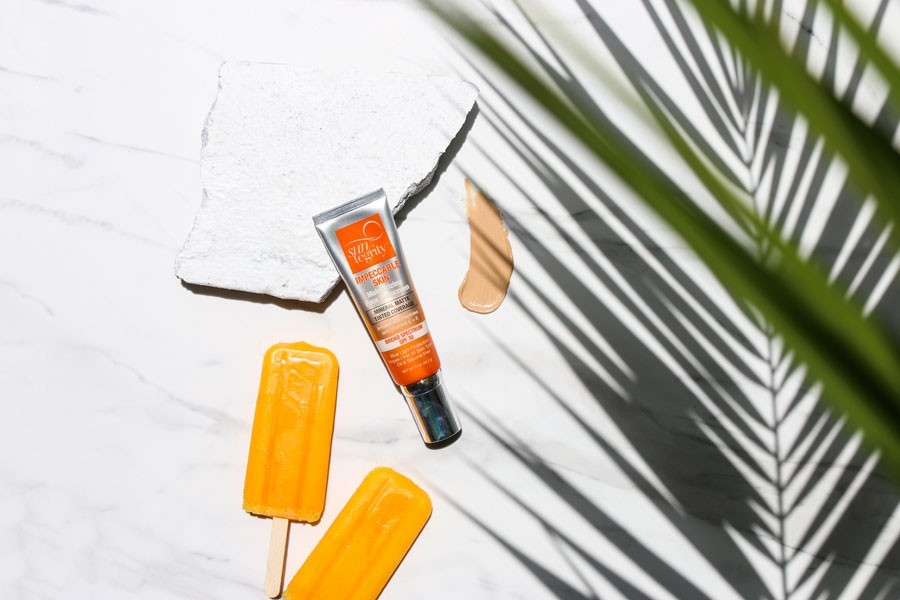Think Zinc
Do you know the sun is the No. 1 cause of skin ageing? Wrinkles, sunspots and pigmentation (and don’t even get us started on skin cancer!) are all bestowed upon us by the sun’s harmful rays, even in cloudy weather and through windows.
Adding sunscreen to your daily skin routine is an absolute must, but if this brings to mind greasy, chemical-laden lotions, you may be using the wrong one. So let’s break down the difference between physical and chemical sunscreens.
Chemical sunscreens use ingredients such as oxybenzone, octinoxate and avobenzone to create a chemical reaction in the skin, absorbing the sun’s rays and converting them into heat. However, this reaction can cause skin irritations, and concerns have been raised about these chemicals after it was discovered they are toxic to coral reefs.
Physical sunscreens, as the name suggests, use mineral barriers to physically shield skin from UVA and UVB rays, such as zinc oxide, a healing mineral used for hundreds of years to treat burns, rashes and infections. Remember the neon green zinc from the early ‘90s? Luckily we now have versions that aren’t as thick, fluro or ghostly white.
Natural suncare brand Suntegrity has just launched in New Zealand a range of face and body sunscreens without the toxic chemicals, using protection from 20 percent zinc oxide without the white-out factor. The nourishing primer or tinted moisturisers are the perfect way to mix mineral SPF 30 into your daily routine, with botanical extracts, anti-ageing properties and antioxidants to soothe and protect your skin at the same time.
Visit the website to learn more about Suntegrity and to find stockists.
